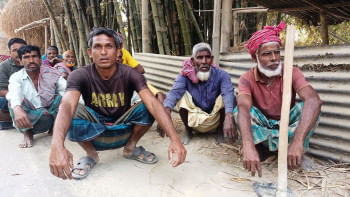Another pyrrhic win? Tigers’ Pakistan success stirs 2021 memories

With tournaments like the Asia Cup and World Cup in mind, a familiar concern looms large: is playing on pitches where even 150 seems out of reach truly helping Bangladesh prepare?
One does not need to look far back to see the cost of pyrrhic victories. Ahead of the 2021 T20 World Cup, Bangladesh swept Australia and New Zealand in a five-match series at Mirpur's Sher-e-Bangla National Cricket Stadium (SBNCS) -- only to lose all five Super 12 matches in the UAE.
This week's series win over Pakistan, sealed on the same slow and low SBNCS surface, has reignited that debate -- even as it delivered gripping drama and a historic T20I triumph.
Bangladesh won the first match quite comfortably on Sunday. But there was no shortage of excitement in the nail-biting thriller that followed in the second game of the three-match series on Tuesday.
Ultimately, the contest boiled down to who adapted better in one of international cricket's most unpredictable battlegrounds: the Mirpur pitch -- where the Tigers remain a different beast altogether.
From the outset, the surface dominated conversation. The venue, often dubbed a "graveyard for batters", has long frustrated both home and visiting sides, regularly producing low-scoring affairs that defy the typical T20 script.
Bangladesh captain Litton Das, a long-time critic of the Mirpur wicket, set the tone ahead of the series. "Many players' careers have gone down because of this surface," he admitted candidly before the opening match.
Yet he sensed a shift, suggesting that the wicket might be more balanced this time: "It's a sporting wicket," he said -- a hopeful declaration rather than a firm belief.
In the end, the pitch might not have been a downright demon but it was hardly sporting either. Still, Bangladesh showed better execution from the start. In the first T20I, opener Parvez Hossain Emon struck a composed unbeaten 56 off 39 balls, calmly guiding Bangladesh in a tricky chase of Pakistan's 110.
While Pakistan head coach Mike Hesson labelled the pitch "substandard", Emon offered a contrasting take: "We could have scored 150–160 had we batted the full 20 overs. We adjusted better than them."
The Tigers' approach wasn't without flaws. Bangladesh stumbled to 28 for four in the second game, trying to force the pace too early. But what followed was a gritty recovery: a 53-run stand between Jaker Ali (55 off 48 balls) and Mahedi Hasan, lifting the team to a defendable 133.
Jaker, later named Player of the Match, stressed the value of role clarity: "As a team, when we communicate clearly that this is the score we want to go for, I can have a clear mind," he said.
"The team's demand is to win. The situation demanded a score around 140–150. We reacted accordingly."
Reacting to conditions rather than resisting them gave Bangladesh the edge. The bowlers executed the plan with precision, making early inroads in both matches. Litton later explained how the conditions evolved during the game: "When the ball was new, it was more difficult to bat. When the ball was a little wet, it came easily to the bat."
For now, the home win is a welcome boost. But the question remains: will familiar success on tricky, low-scoring surfaces help or hinder the Tigers on the global stage?

 For all latest news, follow The Daily Star's Google News channel.
For all latest news, follow The Daily Star's Google News channel. 








Comments